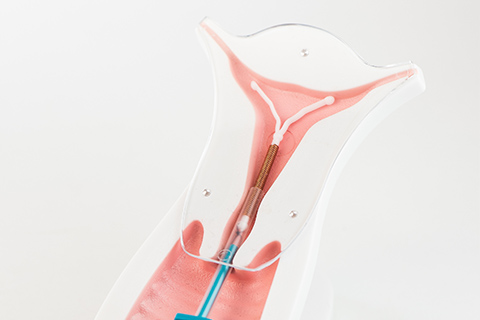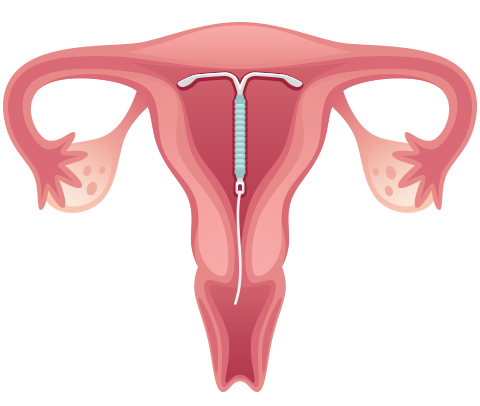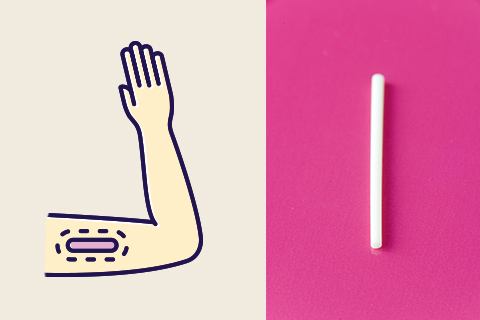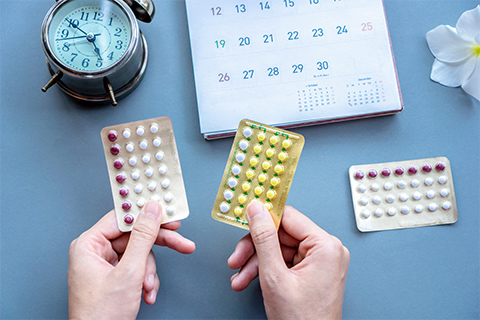IUD: Intrauterine Device
Intrauterine Devices (IUD) are one of the most reliable forms of reversible contraception. Ideally, IUDs are placed during your menses and placed via an introducer through the cervix into the uterus.

Indications
- The 52 mg progesterone IUD (Mirena and Liletta) is also approved to treat heavy periods
- Mirena and Liletta is effective for 6 years (excellent cycle control and birth control option)
- Paraguard is effective for 10 years (non-hormonal and longest-lasting IUD)
- 19.5 mg progesterone IUD (Kyleena) is effective for 5 years (smallest IUD and may be more comfortable in young women who have not had children)
Risks
- There is a small risk of damage to the uterus when the IUD is inserted
- To decrease the chance of damage to the uterus, you must wait at least 12 weeks after giving birth or having an abortion to insert an IUD
- There is a small risk of infection upon insertion
- Like all methods of birth control, there is a small risk of failure. Both IUDs are over 99% effective in preventing pregnancy
- Irregular or heavy bleeding can be a side-effect
Pre-procedure preparation
- Ideally, IUDs are placed during your menses, this makes insertion easier and ensures that you are not pregnant, please use other contraception prior to insertion as insertion could disrupt pregnancy
- Take an anti-inflammatory such as Ibuprofen or Naproxen an hour or two before insertion to decrease cramping
- If you have not had a baby vaginally (i.e. never had a baby or only had C-sections, you will need a prescription for Cytotec (a pill that softens the cervix) to take by mouth a few hours coming to the office to decrease cramping and improve success of insertion
Procedure
After your practioner examines your uterus, a speculum is placed in the vagina. Large Q-tips dipped in a cleansing agent are used to swab the cervix. The IUD is placed via an introducer through the cervix, into the uterus. The introducer is removed, leaving the IUD in place.

The strings attached to the IUD are trimmed so that the IUD can be removed in the future. These strings are trimmed so they are just long enough for you to feel with your fingers when doing a self-check. As the IUD goes in, you may feel cramping or pinching. Some women feel faint, nauseated or dizzy for a few minutes afterwards. If that happens, your practitioner may have you lie down for a while before getting up slowly.
Aftercare
The IUDs are effective immediately so there is no restriction on intercourse or tampon use. You will have a follow up visit in one month to check that the IUD has not been expelled and that you are not having any problems. Your practitioner will instruct you on doing a self-check that should be performed monthly. You should call with heavy vaginal bleeding, pain, or abnormal vaginal discharge.
Our Locations
- NORTHSIDE OFFICE
 404-252-1137
404-252-1137
- EAST COBB OFFICE
 404-252-1137
404-252-1137
- JOHNS CREEK OFFICE
 404-252-1137
404-252-1137
- NORTHSIDE FORSYTH OFFICE
 404-252-1137
404-252-1137
Let's stay in touch
Our monthly newsletter keeps you up-to-date on healthy lifestyle, latest news, and our practice.



